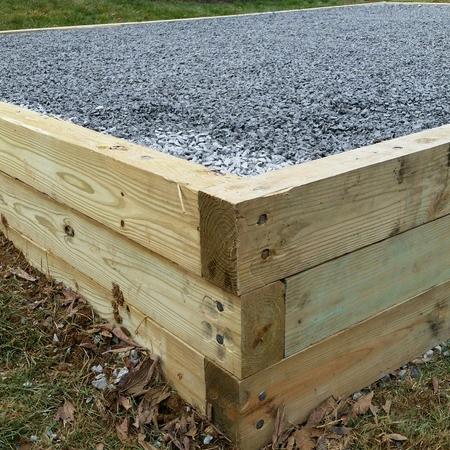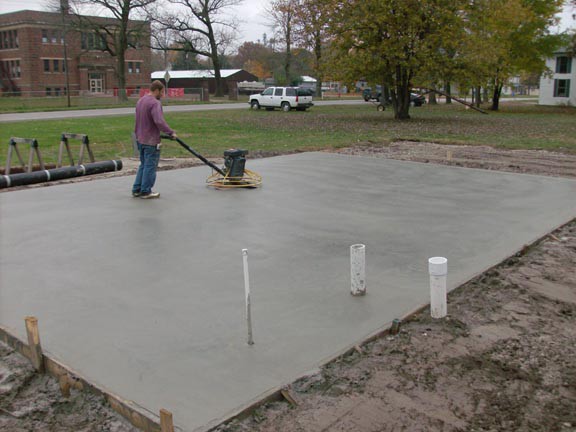 Laying a proper foundation is the best way to get the longest life out of your shed or structure. The foundation your structure sits on can:
Laying a proper foundation is the best way to get the longest life out of your shed or structure. The foundation your structure sits on can:
- help maintain a level structure
- prevent rot
- provide a more stable base for the shed to rest on.
Your area’s zoning and permit laws may determine the type of foundation you can use, so be sure to check with your local offices to find out.
When choosing the spot your structure will be placed, it’s important to make sure the ground is compact, level, and has good drainage. If you're using a gravel or stone bed as a foundation, you should mark off an area that is 1 foot larger on each side than your actual structure. For example, if your new shed is 8 x 12, your foundation should be 10 x 14. This extra foot of space will stop dirt and mud from splashing up on your building, discourage pests, and prevent rot!
There are two main types of foundations – gravel beds and concrete slabs.
Gravel Bed Foundation – for Small or Temporary Structures
Sheds on skids are usually placed on a gravel base because they’re temporary structures, and so is the base. Even if a shed isn’t placed on skids, it still needs to rest on something to keep the floor off the gravel. Wooden formers, concrete blocks or pavers will work instead of a skid.
Keeping the shed up off the ground prevents rot and helps the shed stay level so doors will operate properly. It is possible that over time your shed will “settle,” shifting an inch or two. If this does happen, it may need to be re-leveled to maintain proper door jamb gaps.
For gravel beds, you’ll want to dig 4 to 6 inches down (below the frost line) and compact the ground (while ensuring the dimensions give you an extra foot of bed around your structure). Besides helping to prevent rot and stopping mud and dirt from splashing up, this extra foundation can help ensure that excess water will drain away from the structure.
For a cleaner border, install an outer frame of pressure treated 2” x 6” or 4" x 6" wood around the edges.
Concrete Foundation – For Larger, More Permanent Structures
Concrete slabs are perhaps the strongest and best foundation to provide for your shed, garage, or pool house. However, they should be installed by a professional and therefore can add some cost on to your project.
The biggest advantage to a concrete slab is that your shed won’t settle or shift. So if you’re looking for a big shed, or you plan on storing heavy equipment like tractors, mowers, and bags of supplies, a concrete slab foundation is the way to go.
You can also forgo a wood floor in your structure and use the slab as the shed floor, setting the walls on the slab.
There are several different types of concrete foundations besides a plain slab:
- The Gibralter is enforced with rebar, includes cement walls, a concrete slab, and a gravel base for drainage. This takes more than a day to prepare and is typically used in both residential home construction and commercial construction.
- The Graduated slab includes a concrete slab, rebar for integrity, and a gravel base for drainage. This foundation can be done in 1 day and provides frost protection like all other concrete foundations. It's one of the more cost-effective options for a concrete foundation.
- The Floating Slab is the most economical option and is similar to the graduated slab, except without trenches.
- Concrete pillars work well for pavilions and pergolas. They include sona tube forms, rebar, poured concrete and metal strapping. Typically a gravel or stone bed is used in conjunction with them.
 We’re Happy To Help
We’re Happy To Help
While planning and quoting your structure, we can provide the option of having our team lay the foundation. If you have any questions about preparing your foundation or you wish us to do so, please call us at 877-272-7252. We’ll be happy to walk you through the process.
Shed Foundation FAQs
